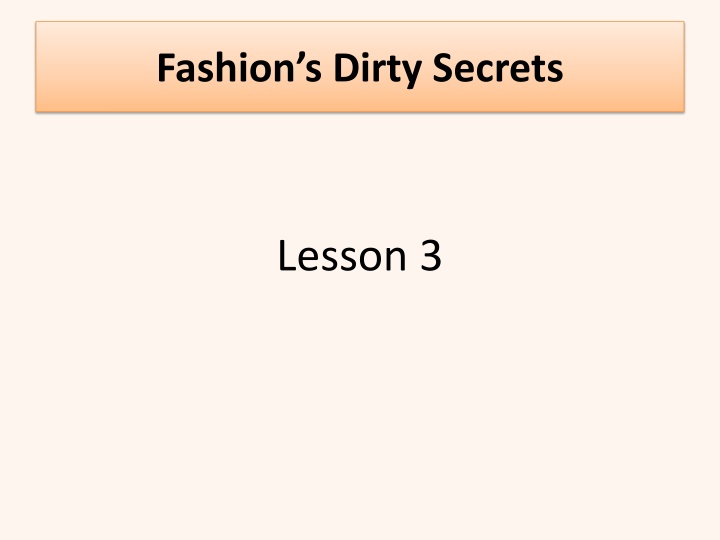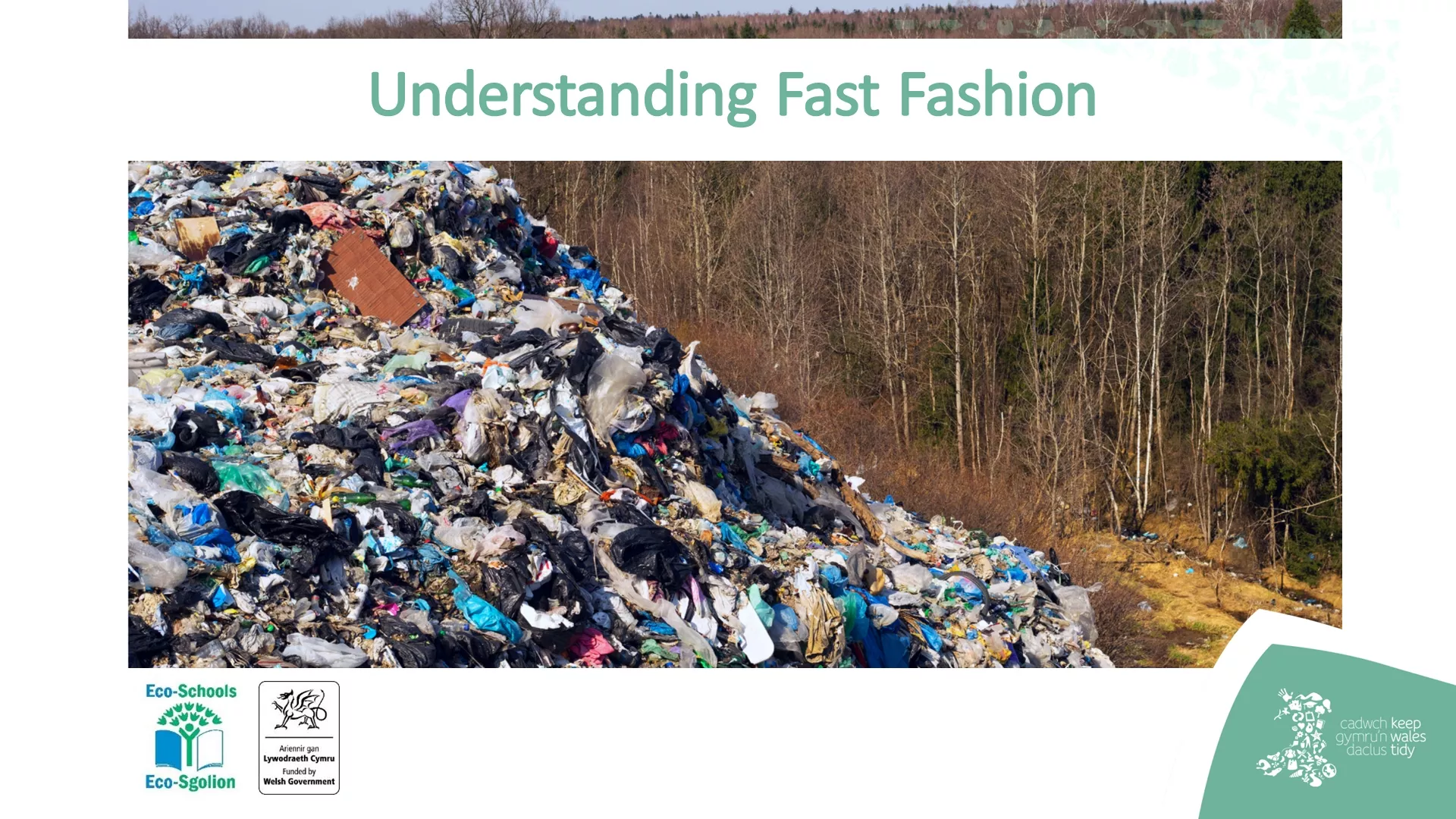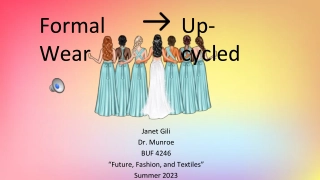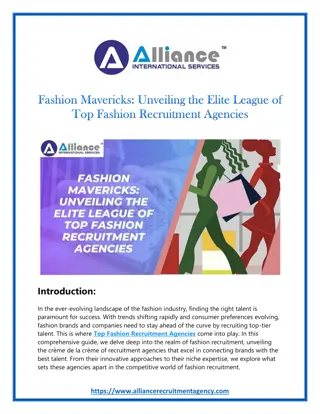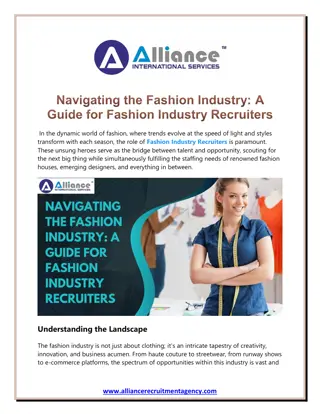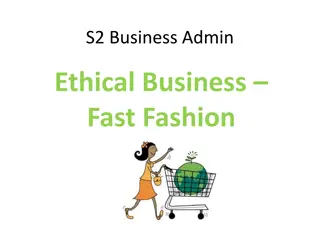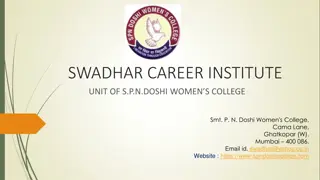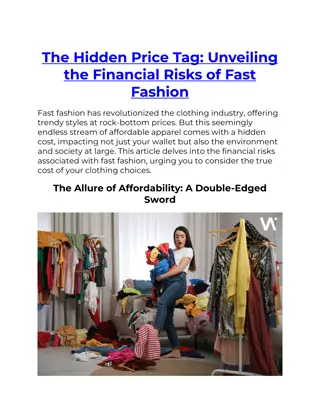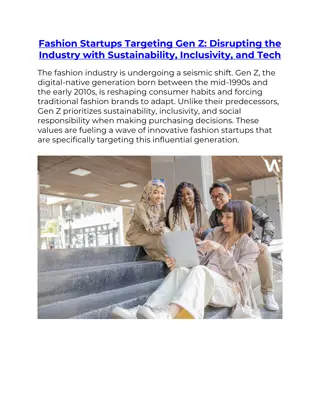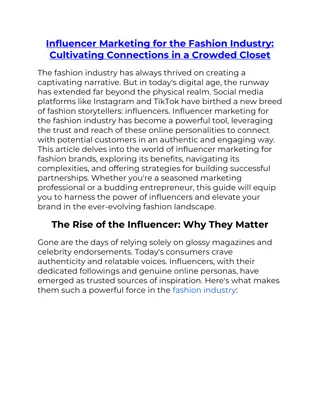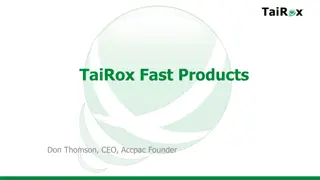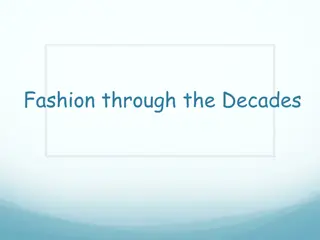Fashion Industry Stakeholders' Views on Fast Fashion: A Comprehensive Analysis
In the exploration of stakeholders' perspectives on the fast fashion industry, Western clothing brands benefit from globalization for cost-effective production. Fashion consumers enjoy affordable clothing options due to high production volumes. Local fishermen and residents face environmental degradation near the Aral Sea basin. Environmentalists raise concerns about biodiversity loss, while governments see economic growth potential amidst controversies. This analysis delves into the complex dynamics of fast fashion's impact on various groups.
Download Presentation

Please find below an Image/Link to download the presentation.
The content on the website is provided AS IS for your information and personal use only. It may not be sold, licensed, or shared on other websites without obtaining consent from the author.If you encounter any issues during the download, it is possible that the publisher has removed the file from their server.
You are allowed to download the files provided on this website for personal or commercial use, subject to the condition that they are used lawfully. All files are the property of their respective owners.
The content on the website is provided AS IS for your information and personal use only. It may not be sold, licensed, or shared on other websites without obtaining consent from the author.
E N D
Presentation Transcript
Fashions Dirty Secrets Lesson 3
Tuesday, 01 October 2024 Secondary geography Fashion s Dirty Secrets Fast Fashion Stakeholders Read the article: Stacey Dooley investigates and this article https://www.theguardian.com/sustainable-business/sustainable-fashion- blog/2014/oct/01/cotton-production-linked-to-images-of-the-dried-up-aral-sea- basin#maincontent Using the information above and your video notes for each of the groups below write a paragraph outlining their possible view of the fashion industry are they in favour of it or against it? Why? Can you give reasons? Western clothing brands (e.g. Primark, H&M, ASOS ) Local people in Kazakstan Environmentalists Fishermen in Uzbekistan Governments of Kazakstan and Uzbekistan Fashion consumers
Fast Fashion Stakeholders Print out and stick into your book Read the article: Stacey Dooley investigates and this article https://www.theguardian.com/sustainable- business/sustainable-fashion-blog/2014/oct/01/cotton-production-linked-to-images-of-the-dried-up-aral-sea- basin#maincontent Stakeholder View of fashion industry with explanation Western Clothing Brands Fashion consumers Fishermen Locals Environmentalists Government
Fast Fashion Stakeholders Print out and stick into your book Read the article: Stacey Dooley investigates and this article https://www.theguardian.com/sustainable- business/sustainable-fashion-blog/2014/oct/01/cotton-production-linked-to-images-of-the-dried-up-aral-sea- basin#maincontent Stakeholder View of fashion industry with explanation Western Clothing Brands Globalization and the division of labour has allowed western clothing brands to produce clothes at a very low cost which allows them to sell them cheap and in high volumes making billions in profits Fashion consumers The globalization of the fashion industry allows clothing brands to produce vast quantities of clothes at very low cost this means fashion consumers can by a wide range of clothes relatively cheaply so benefit from the current set up Fishermen Local fisherman in the Aral sea have seen fish stocks depleted over the course of the last 20 30 years as water is extracted for the cotton industry and pollutants are discharged into the lake reducing water quality - Locals Local people benefit from jobs available in the textile industry that involve widespread cotton farming. These jobs bring higher incomes, although the working conditions at times can be challenging. Public services such as schools and hospitals can benefit from investment Environmentalists Extensive water abstraction and chemical pollution can impact the flora and fauna of the areas around the Aral sea reducing the overall biodiversity. Contamination of soil and water supplies can also impact the health of local people Government Direct investment by western clothing brands can bring foreign exchange into the economy and taxes paid by the companies can provide an income for the governments to spend on public services (although money can be lost to corruption) Can lead to economic growth and jobs.
Tuesday, 01 October 2024 Secondary geography Fashion s Dirty Secrets Prep activity eco-friendly fashion campaign Your task is to come up with a new type of clothing or garment that does not harm the environment! You need to think about its material, how much it will cost, and where it will be made ..
Tuesday, 01 October 2024 Secondary geography Campaign for eco-fashion Item of clothing: Brand name and logo: Product cost: How our product will help (include type of material and where it will be made): Product design (draw a picture): Feedback Product positives: Things to improve:
